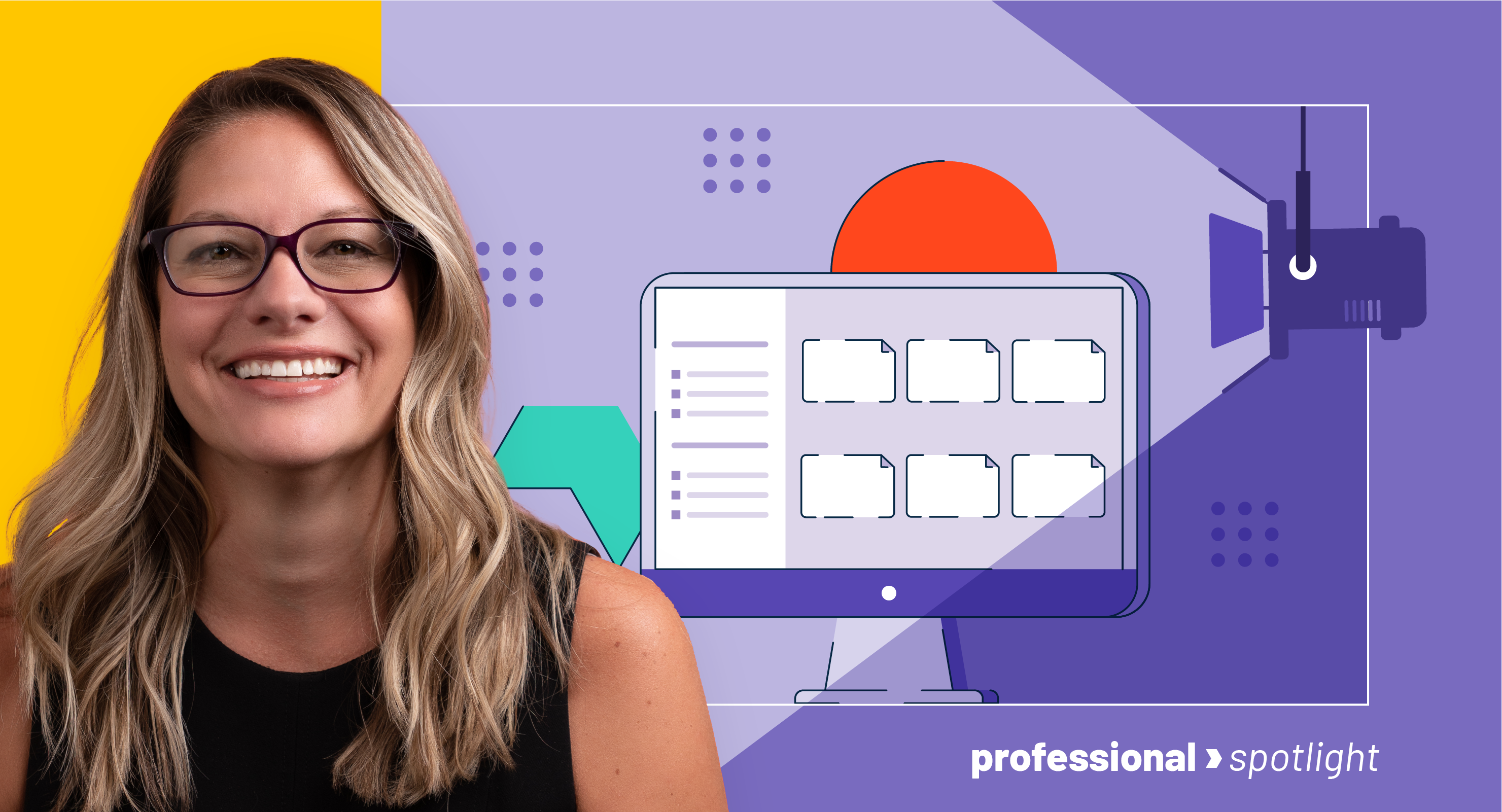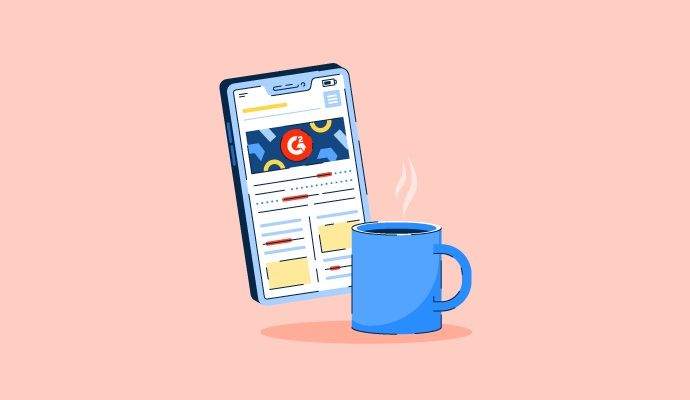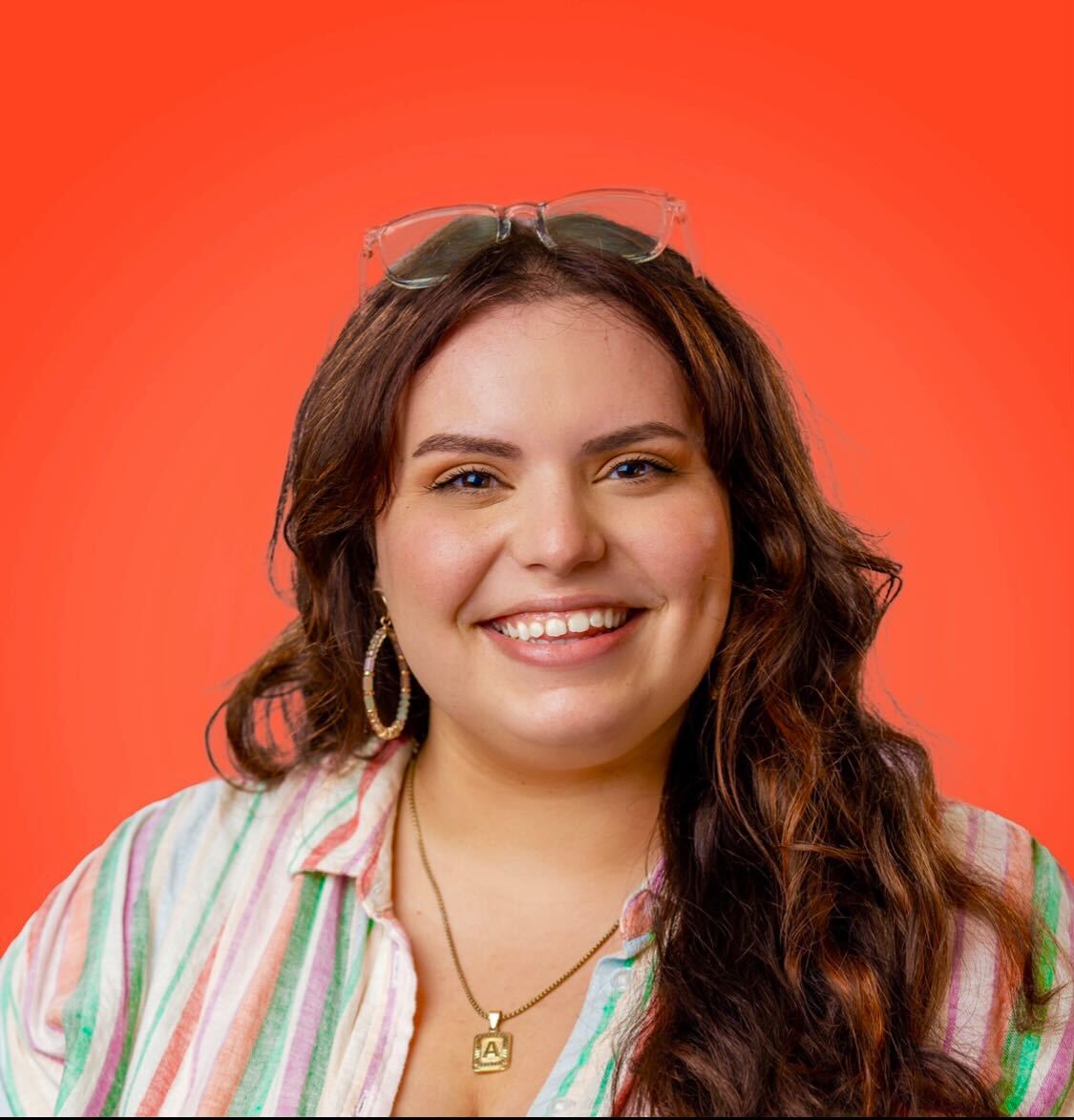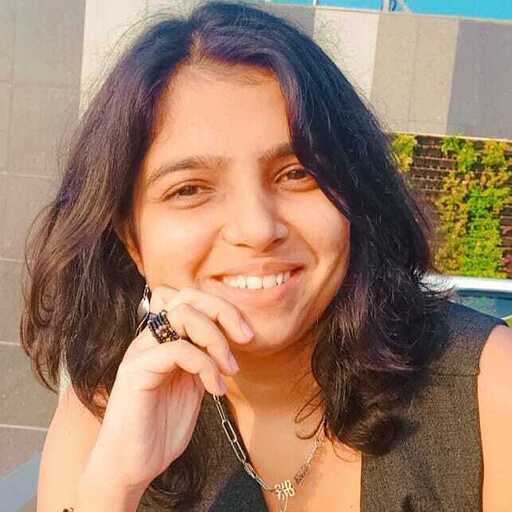May 3, 2023
 by Brittany K. King / May 3, 2023
by Brittany K. King / May 3, 2023

Think about your favorite product.
Now ask yourself, “What would make this a little easier to use, a little more helpful, a little bit better?” And ultimately, what can we do to bring more delight and joy into the world?
This is what product research and development professionals are tasked with doing every single day. And spoiler alert – it’s no easy feat.
I had the privilege to sit down with G2’s own Chief Product Officer, Sara Rossio, and pick her brain about product development and innovation. During our talk, Sara shared her own efficiency hacks, what she thinks makes a good product, and how she keeps her team one step ahead of the rest. After all, product research and development is Sara’s cup of tea.
This interview is part of G2’s Professional Spotlight series. For more content like this, subscribe to G2 Tea, a newsletter with SaaS-y news and entertainment.
What’s your favorite beverage? Black coffee. Simple.
When do you enjoy it in relation to work? First thing in the morning, before I even sit down at my computer.
What was your first job? My first job right out of college was as a marketing manager, but I was basically a generalist.
What’s your favorite software in your current tech stack? Gong. It makes me very efficient. I always tell other product people that Conversational Intelligence is the biggest efficiency hack that's happened in product management that most people don't know about.
What problems at work make you want to throw your laptop out the window? Automatic restarts, because I can’t control them. You only get a few minutes, and sometimes I’m in the middle of a call – like, what am I gonna do? The answer is to calmly explain I will be right back (and learn to restart often!).
Brittany King: Hi Sara! Thank you so much for taking the time to chat with me today. I peeked at your Google Calendar before this call, and whoa, you’re pretty booked. What are some of your best time management hacks?
Sara Rossio: Know yourself. And know what works well for you and what brings you energy at different points of the day. Think about doing certain projects at those times. You'll become more efficient and also keep your energy level for other types of work.
The second thing I do – and I'm kind of old school – but I actually write down a to-do list. Often, I'll time box work. It’s in my nature to do things perfectly, and what time boxing teaches me is if I look at something and say, “This should take 10 minutes,” then I give myself the freedom to not make it perfect.
And if it takes longer, then it's a moment of reflection to know more about myself and how I can do things in a more productive way. That kind of analysis has always worked well for me so I can be more efficient.
And by the way, I do not believe in multitasking.
Really? That shocks me. Judging by your schedule, I assumed you were a master multitasker.
I think it's inefficient when you're not fully present. If you're fully present for a moment, like I am right now – I'm not looking at Slack, I'm not looking at anything else – I feel like I can deliver what is needed most effectively. And so when I'm on a project, I shut everything down.
When I'm working on something, I don't look away; I don't get distracted.
A lot goes into developing new products and managing existing ones. How do you balance product upkeep and product innovation on your team?
It can be hard to do within a product and within a portfolio of products. I start by staying focused on where the product is in its maturity. And if you understand how big your total relevant market is, and you think about your core customer needs and wants, it almost answers the question for you and your roadmap.
You might say, “I actually need to push on innovation now because my competitors are pushing on innovation, or a new piece of technology just shifted how consumers think, like AI.” I often stay curious and not stubborn in my opinions and pause to ask, “Can I use this to actually solve a problem I've never solved before? So I'm going to actually prioritize and use this to drive more innovation and delight.”
“But the real key to product development and innovation is listening to your customers.”
Sara Rossio
Chief Product Officer at G2
The truth is, if you stay close to your customers, they'll often ask, “Have you thought about…?” instead of saying, “This is a bug.” And a lot of times, if you stop asking and actually have these open-ended conversations with customers, you'll end up just focusing on sustainment activities. And then you'll lose sight of the big market shifts that could or sometimes have happened. And that's really easy to do.
My general rule of thumb is: know where your product is in the market and your maturity cycle. Then that will usually dictate, for example, create guidelines such as ‘20% bugs and 80% innovation’. And you can play around with this formula based on changes, competitors, and technology.
But always question and be open.
You mentioned that it’s easy to get too focused on bugs and general product maintenance. What do you do when your team's not being innovative enough?
I invite them into conversations where we start to brainstorm more about what’s working and what's not working. And I use a phrase that gives them the freedom to think bigger, which is: “Under what condition?”
So often, someone will say, “This is a problem.” And then we can brainstorm and ask, “Okay, what actions can we take given the constraints? What if you turn it on its head? Under what condition do those constraints no longer exist?”
And that frees people to actually think in a different way. Usually, the constraints are “I don't have the time, I don't have the money, I don't have the people.” But what if you did?
I like asking that question because I firmly believe the team working closely on the problem know the answer. And they know better than I do. So if there's a moment where I can just invite the conversation, and then figure out how to help them. Then I feel like I'm doing my job.
I love the idea of having these freeing brainstorming calls. But honestly, I’ve also seen how easy it is for ideas to live and die within a single Zoom call. How do you make sure good ideas don’t stay ideas? How do you make sure they actually come to life?
Don't leave the room without having a clean agreement and commitment to what's next. And often, when talking about what's next, I push them harder and say, “Okay, who will do this, by what date?”
Especially in brainstorming sessions tied to new product development, it’s important to find the smallest MVP [minimum viable product] possible. If you can just break it down to one tiny thing, you can start on your way and do it in some sort of timeframe that makes sense for you – whether it’s a month or two weeks or even a day. I feel like that creates momentum to continue.
It's hard to start. But once you start, then it's easy to continue. And so for me, I'm like, “What's that smallest thing we can do in the next week or so?”

Keep up with what’s really going down in marketing with the G2 Tea newsletter. Subscribe here
Even small steps can lead to great changes. Generally speaking, how often do you think a product should be overhauled or redesigned?
It depends on if a CPO owns both engineering and product development, like I do, versus product only. If I own product management only, I like to be disruptive and redesign at least every six months; put out something completely new.
If I think about it from a stack, architecture, and engineering perspective, I would say, “Oh, gosh, not that often.” Because that technical work to redesign, that re-architecture, that backend overhaul, often is very time-consuming and takes twice as long as you ever think, and may not yield the benefit that you're looking for.
So this is a scary question because I own both teams. If I could say where I would do the redesign or the refresh, I would answer the question as if I own product management only. I would keep it to the front end.
Sara Rossio
Chief Product Officer at G2
Do you think owning both product and engineering makes you more realistic when redesigning or refreshing products?
I have a different level of empathy for engineering, whereas before, it was like, “I want it. And so I'm going to ask. And hopefully, they're creative enough to get there faster.” But when I've watched it for so long now, I have a different perspective on it. I want them to do work that they're excited about. And I might not have felt or understood that earlier in my career, or if I only owned product.
Right now, there’s a lot of discussion about customer-led growth and product-led growth. What are your thoughts on CLG vs. PLG, and do you have any advice on when to implement these different mindsets?
What’s interesting is that you kind of have to do both right all the time. And PLG works really well, in my opinion, for simple experiences and products to convey a clear value proposition.
But when I look at what I do every day, I believe in customer-led growth over product-led growth because you connect so much with the customer, you get their feedback, and you're constantly keeping them at the epicenter of everything you do.
As for product-led growth, you should be doing that too. And you just make the moments more efficient on how you're driving growth. In SaaS, you need both.
I’ve also heard people say, “PLG and CLG are the same thing.” I almost expected you to answer that.
I think they're inseparable because you can't have product-led growth work without being customer-centric and making sure you get the insights that guide the growth for customers.
This was a hard question for me because my reaction is to always put the customer at the center of everything I do. And product-led growth is how you implement it to make the experience easier for them.
What’s your favorite product currently on the market?
I can't say Gong again?
You can say Gong again.
What's funny is that Marty Duffy [SVP, Product R&D Operations at G2] asked this question in one of our Slack channels: what's the best product that you have?
And it was interesting. People answered things like, “I got this new floss” or “I bought a new bird camera,” and I was stumped. I don't know what product I love and can't live without. There are parts of every product I like. Even my water bottle – I love it because it can hold a ton of water and it stays really cold for a long time. Simple things like that.
Anything that helps me be more efficient makes me happy.
Now it’s time for the hardest question of them all: what’s your favorite G2 product?
Well, I have to go with what is truthful to me, which is Market Intelligence. And the reason is that I'm the persona it's built for. Being in product, you don't always have the answer of what to do. You collect all of this data from customers and competitors and the market, and you're constantly trying to smoosh it all together to get a hypothesis of what to do.
But it's really scary when you're building things, and a lot of times, you don't know what you should be building – especially if you're being disruptive or you're trying something really innovative. But when you have that much data at your fingertips, and you can point to it and say, “Oh, this just happened. This is what I'm hearing from your ICP [ideal customer profile],” it builds your own confidence to actually move forward.
What type of insights do you think are especially important?
One thing that's really interesting about working in product is learning how people implement your product (especially if you're in software) and how they perceive the value of your product. I always like seeing the questions in the review form that ask about speed to return on investment, ease of implementation, who implemented it, how much adoption they got, and the perceived value.
Those questions are so powerful because you might look at them and realize, “Wait, it might not be the application that people are disappointed with. Instead, I need to figure out how to make it easier to use the features.”
That, for me, is gold. I've never been shown that data before in such a holistic way. You can also look at [your competitors’ challenges] and ask, “What does that mean to me?” and figure out how to change your product offering or positioning or pricing to support that.
I was curious about which product you were going to pick, and Market Intelligence definitely makes sense. It’s really cool when you can essentially solve a problem for yourself.
As a product person, it’s easy to fall into the trap of being stubborn and not looking at market signals because I believe I’m right [laughs]. But with this product, you don’t have to guess anymore. It’s super valuable for people like me.
Follow Sara on LinkedIn to keep up with G2’s innovative product research and development team.
Brittany K. King is a former Content Marketing Manager at G2. She received her BA in English Language & Literature with a concentration in Writing from Pace University. Brittany’s expertise is in supporting G2 products and sellers, focusing specifically on Buyer Intent data and Review Generation. After 5pm, you can find Brittany listening to her extensive record collection, hanging with her dog and cats, or booking her next vacation.
Launching a product isn’t just about the grand entrance. It’s about coordination, strategy,...
 by Alexandra Vazquez
by Alexandra Vazquez
At G2 Reach 2023, my colleague Palmer Houchins, Head of Marketing at G2, and I teamed up to...
 by Sara Rossio
by Sara Rossio
Creativity is the new currency.
 by Kamaljeet Kalsi
by Kamaljeet Kalsi
Launching a product isn’t just about the grand entrance. It’s about coordination, strategy,...
 by Alexandra Vazquez
by Alexandra Vazquez
At G2 Reach 2023, my colleague Palmer Houchins, Head of Marketing at G2, and I teamed up to...
 by Sara Rossio
by Sara Rossio


